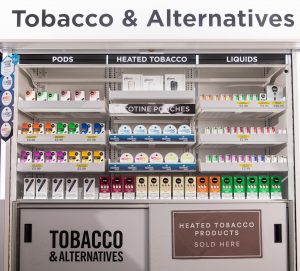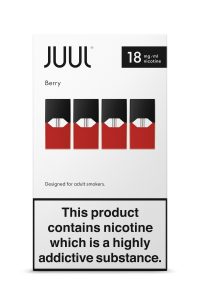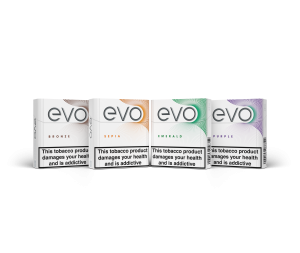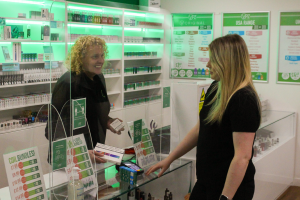Marketing to customers: Sell your store to sell more
July 12, 2021

As the summer stretches ahead, retailers have a huge opportunity to capitalise on the growing vape sector – if they market their business effectively. Tom Gockelen-Kozlowski reports
It has been, I think most retailers would agree, quite a year. While businesses have been either too busy refilling their shelves or shuttered by repeated lockdowns during the pandemic, it is now at last time to look at how stores can get their next generation nicotine markets in shape.
So, how should retailers market these ranges to the millions of customers who see vape, heated tobacco or nicotine pouches as their way out of smoking for good?
The positive news is that suppliers say retailers will find a category in good health.

“The vaping market shows no signs of slowing down, in fact, there has been a growth of 21.6 percent in year-on-year sales over the past 12 months,” says Gemma Bateson, head of reduced risk products at JTI. “Broadening retailer and staff knowledge of the vaping category has become even more important since Covid restrictions were first enforced at the start of last year and vape stores were forced to close. With more vapers turning to their local stores to purchase their devices and e-liquids, it is essential that retailers and their staff can effectively communicate different types of devices and e-liquids to their customers to help find them the right fit.”
This means that now is the time for retailers to focus on marketing their ranges. Yet, what exactly does successful marketing look like in this new and fast-growing sector?
According to Doug Mutter, director of leading vape specialist chain VPZ, it is all about understanding how customers will experience your business from the moment they approach.
“With such a wide range of products available for customers, it’s important to guide customers towards the right choice for them as soon as possible via PoS and in-store resources,” he says. “Make the beginning of the customer journey easy, educational and informative as early as possible through PoS, then utilise store staff and expert knowledge to seal the deal. Have a focus in mind and make sure that your key categories, products or messages cut through the noise and stand out among the sheer volume of other products available.”
If possible, allowing new customers to hold products as they discuss what might be right for them is another effective way of demystifying the category. “Clear, concise, eye-catching and educational PoS is the best resource you can get, however, we find that customers being able to touch, feel and try products is the best way to attract attention,” Mutter says.
One of the most unique elements of the vape category is that a key competitor for products is actually those in another category entirely – namely, tobacco.

“In order for e-cigarettes to be able to compete with combustible cigarettes, it’s important that they are available in the same places that adult smokers buy their cigarettes,” says John Patterson, sales director for JUUL in the UK.
Fortunately for retailers that have been selling tobacco products for decades, this allows business to ‘re-engineer’ some of the key category management practice they’ve been using in a market that, in some respects, behaves in much the same way.
Patterson says: “Adult smokers generally buy the same brand of cigarettes, using the same store to purchase their tobacco. Displays which are clean, well merchandised and provide a range of alternatives to cigarettes will have greater appeal for a smoker looking to switch away from cigarettes and may increase the likelihood that they will continue to purchase from your store. Just as in other categories, success lies in stocking, displaying and prioritising the category leaders, offering a limited range of secondary alternatives and removing the tail of slow sellers which only take up space and reduce return on investment.”
Of course, the vape category isn’t exactly the same as the tobacco market. With few tobacconists operating on UK high streets, a key difference is that stores are competing for trade with businesses in a range of channels, from convenience stores to vape specialists, pharmacies to supermarkets.
“Adult smokers and existing adult vapers have multiple channels in which to shop for vaping products,” Patterson says. “It is vital that retailers have a professional, well-managed display to gain and retain customers.”
Retailers need to ensure their in-store teams are also well acquainted with the category and update them regularly on the latest trends – informed staff will be able to market new products better than anyone, after all.
It is one of the reasons suppliers are investing in platforms to support businesses and share best practice.
“Having up-to-date knowledge on the latest products is key to offering an informed and good level of customer service,” says Gemma Bateson. “To confidently talk about new products, retailers and their staff should use all the platforms available to them – including JTI’s trade retailer website, www.JTIAdvance.co.uk. This will help them to understand key category insights and product developments.”
Philip Morris (PML) is another business to invest in a digital platform to support retailers and, as well as providing best-practice marketing advice from the firm, the Digital Trade Engagement platform also allows retailers to share great ideas on building a local reputation for heated tobacco among themselves.

Kate O’Dowd, head of commercial planning UK and Ireland at PML, says: “Our field force team are always at the end of the phone for our retail partners – however, we want to ensure they also have access to extensive digital resources and support whenever they might need it. With IQOS now the UK’s number one smoke-free product, our new Digital Trade Engagement platform will help retailers meet the growing demand in heated tobacco, while increasing their knowledge of the category and the role it can play in helping smokers move away from cigarettes for good.”
Another difference – and advantage – that the vape category has over tobacco is that restrictions regarding marketing of vape products do not stop stores using external sales tools such as A boards to enable potential consumers walking by to find out that a particular brand is available inside.
In-store display is another key area where stores can market the range they stock to new and existing to shoppers. While – to return to the tobacco comparison – many stores are finding integrating next generation nicotine products into their tobacco gantries, the more liberal restrictions facing vape and other non-combustible products means options such as counter-top units can be an option for stores of all sizes and varieties.
“By having a clear and tidy display, customers will find it easier to find their preferred product, in turn experiencing a better level of customer service,” says Gemma Bateson. “For smaller stores, or those looking to introduce vaping products for the first time, a countertop display solution is a viable option to test consumers’ response to the introduction of the category. Once stores expand their range, it is best to move to a category solution where next generation nicotine products and tobacco products can be displayed in the same gantry to ensure quick service time and repeat custom.”
Firms such as JTI are working hard to ensure that such integrated gantries are effective as possible.
“For retailers, there is now a larger category solution available, which includes backlighting where vaping, next generation products and tobacco products can be stored in the same gantry,” says Kieran Marsh, merchandising design lead manager at JTI. “The solution incorporates the entire category and is available in a variety of widths. If this is of interest, speak to your JTI representative about our new category management solutions.”

This advantage over tobacco extends to the fact that online marketing of a store’s range is possible within the law. According to Doug Mutter, however, retailers need to be careful about how they execute any social media posts about vape products:
“Within the vape industry, social media is a tricky one as you are unable to utilise any paid-for advertising. With that in mind, gaining a strong following initially is important and once you have that, engage with them openly about the industry as a whole as well as about products and deals. No one wants to feel like they are just being sold to constantly, so interact and engage with customers on a real level. Start a debate about the industry itself, about regulations or encourage them to share their vaping experiences. Having varied interactions like this encourage brand affinity and a true passion for the vaping industry and what making the switch to vaping has done for them on a personal level.”
Once a retailer has ‘captured’ a customer, gained their trust and provided them with a product that suits their needs, the hard work is delivering a reliable service that ensures they keep coming back.
